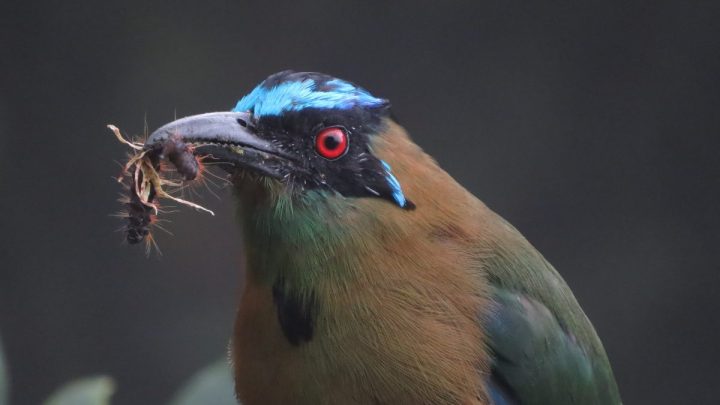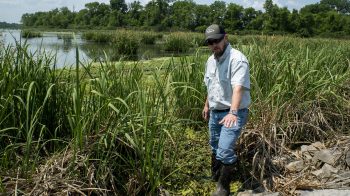
Is birding tourism in Colombia finally ready to take flight?
Is birding tourism in Colombia finally ready to take flight?

In March of 2020, when the COVID-19 pandemic trapped us at home, my girlfriend and I bought a birdfeeder. A month later, we were going for runs around our Oakland neighborhood, carrying a pair of binoculars and a paperback field guide to the birds of California while recording the results for posterity on our phones.
“We stopped our run, because we’re in a very bird-rich area,” I said in one recording. “Yeah, we got two sparrows and two pigeons here,” my girlfriend responded.
Thus began our small part in the global pandemic birding bump.
Birdwatching was a multibillion-dollar industry in the United States before the pandemic. Today, there are 60% more people logging their lists on the bird identification app eBird. The number of participants in the Great Backyard Bird Count has more than doubled.
This adds up to more people buying bird feeders, binoculars and cameras. Now that international travel is recovering, it also means new opportunities for international birding tourism — especially in Colombia.
In one neighborhood stroll in the city of Cali, Colombia, with local guide Andres Lozano, I saw Colombian chachalacas, black-throated mangos, jet antbirds, four kinds of tanager, yellow-bellied seedeaters, chestnut-fronted macaws — 35 species in less than half a mile.
It was a striking contrast to the sparrows, pigeons and crows of our neighborhood in California. But in Colombia, it’s normal. Colombia has more types of birds than any other country in the world, with nearly one-fifth of Earth’s avian species.
Colombia does not, however, lead the world in the number of birdwatchers.
“The country with most species of birds in the world still has very few birdwatchers,” said Carlos Mario Wagner, Colombian birding pioneer and director of the Colombia Bird Fair.
Wagner said that when he was growing up, running around in the woods with binoculars in Colombia was downright dangerous.
“It’s very associated with armed groups,” he said. It was an activity for soldiers in the Colombian army, right-wing paramilitary groups and left-wing rebel groups that had been fighting for decades.

An early-morning birding expedition in a suburb of Cali, Colombia, organized by the Colombia Bird Fair. (Stan Alcorn)
Jorge Maldonado, a professor of economics at the Universidad de los Andes in Bogotá, Colombia, set out to measure the untapped economic potential of bird tourism in 2015. At that time, the Colombian government was finally hammering out a peace deal with the largest remaining rebel group: the Revolutionary Armed Forces of Colombia, better known as the FARC. It looked like it was finally going to be safe to go to many of the wild places that could be birding destinations.
“Now, we have the possibilities of access to places that before it was impossible to go,” Maldonado said.

His study estimated that a hypothetical 10-day tour of post-conflict Colombia could attract a minimum of 280,000 birders from the United States and Canada.
“If this is going to happen, we are getting $46 million per year,” Maldonado said.
It’s difficult to evaluate this estimate, as reliable figures on the number of birding tourists in Colombia are hard to come by, but international visitors to Colombia did increase significantly after the peace deal. One million more international visitors were arriving each year, according to the Colombian government’s figures.
Then came the pandemic. “It was devastating,” Maldonado said. “Now, we are recovering again.”
One sign of the recovery was the ninth annual Colombia Bird Fair, back in person this year for the first time since COVID-19 struck. I was one among hundreds of international bird nerds. There were workshops, lectures — even a competition to imitate the call of a chestnut-breasted wren.
Mollee Brown, owner of the birding-focused marketing company the Nighthawk Agency, was there. She was running a workshop to help Colombians better promote their birding businesses to a market altered by the pandemic.

“There has definitely been a big increase in people who are interested in birds and birdwatching,” she said. That could mean a big increase in birders coming to Colombia, as long as the infrastructure can keep up.
“Building up local guides, local conservation initiatives, local protected land, the feelings of security and confidence to travel in Colombia — I think all of those things need to click,” Brown said.
There’s a lot happening in the world. Through it all, Marketplace is here for you.
You rely on Marketplace to break down the world’s events and tell you how it affects you in a fact-based, approachable way. We rely on your financial support to keep making that possible.
Your donation today powers the independent journalism that you rely on. For just $5/month, you can help sustain Marketplace so we can keep reporting on the things that matter to you.

















